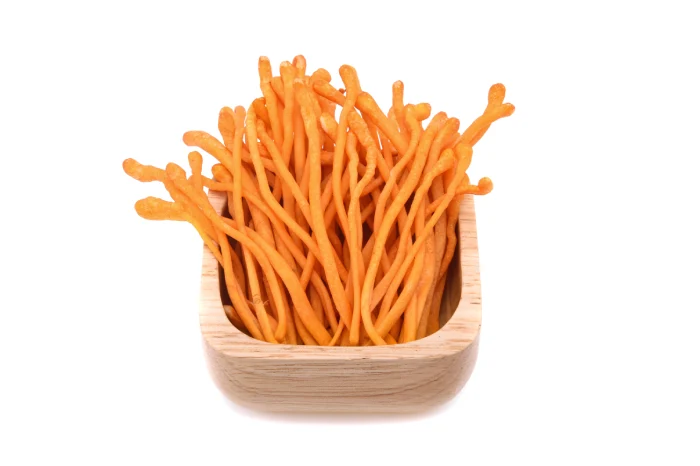Are you curious about the buzz surrounding the use of taurine in dystonia? You’re not alone! The use of taurine in dystonia has been gaining attention in the medical community, and for good reason. In this comprehensive guide, we’ll explore how this amino acid might be a game-changer for those dealing with dystonia.
What is Taurine and Why Consider the Use of Taurine in Dystonia?
Before we dive deep into the use of taurine in dystonia, let’s clear up some common misconceptions. Taurine is not bull sperm or any other animal fluid – it’s a sulfur amino acid that your body produces naturally. The use of taurine in dystonia is based on its potential to act as a muscle whisperer, calming those overexcited neurons that cause involuntary muscle contractions. It’s like that overachieving friend who’s good at everything – involved in various bodily functions, from heart health to brain function. But here’s where it gets juicier than a gossip session at brunch: the use of taurine in neurological disorders, including dystonia, is gaining traction faster than a TikTok dance challenge!
The Science Behind the Use of Taurine in Dystonia: Nerdy but Nice
Now, let’s get our geek on and dive into the science behind the use of taurine in dystonia. Don’t worry, I promise it’ll be more fun than your high school chemistry class!
The use of taurine in dystonia is rooted in scientific research. Studies exploring the use of taurine in neurological disorders, including dystonia, have shown promising results. Taurine acts as an inhibitory neurotransmitter (fancy talk for “chill pill for your neurons”) and helps regulate calcium levels in cells. Is taurine a sulfur amino acid? Why does this matter for dystonia? Well, imagine your muscles are like a group of overexcited puppies. Taurine comes in like a gentle dog whisperer, calming them down and getting them to behave.
This is why researchers are more hyped about the potential use of taurine in dystonia management than we are about a new season of our favorite Netflix show!
Bioavailability: The VIP Pass for the use of Taurine in Dystonia
When we talk about the use of taurine in dystonia, we’ve got to discuss its bioavailability. Now, don’t let that big word scare you off – it’s actually pretty simple. The bioavailability of taurine ingestion is like your body’s VIP pass for taurine. It means that when you consume taurine, your body rolls out the red carpet and says, “Come on in, we’ve been expecting you!”
This high bioavailability of taurine makes it a promising candidate for use in dystonia treatment. It’s like ordering a pizza and actually getting all the toppings you paid for – your body can efficiently use the taurine you consume, whether through food or supplements.
Taurine for the Carnivore Muscle: Meat Lovers, Rejoice!
For all you meat lovers out there, here’s some news that’ll make you happier than a kid in a candy store: taurine is abundant in animal products. In fact, the taurine carnivore muscle connection is real! For those exploring the use of taurine in dystonia through diet, these foods should be on your radar. Foods high in taurine include:
- Fish (especially shellfish) So go ahead, be shellfish with your shellfish!
- Meat (beef, pork, lamb) – Your steak just got an upgrade!
- Poultry – Chicken dinner, winner winner!
- Dairy products – Got milk? Get taurine!

So, if you’re looking to boost your taurine intake through diet, these foods with taurine should be on your shopping list. It’s like a treasure hunt, but instead of gold, you’re finding taurine!
But wait, what if you’re not a carnivore? Don’t worry, we’ve got you covered too!
Plant-Based Taurine: Yes, It’s a Thing!
For our veggie-loving friends, while plants don’t naturally contain significant amounts of taurine, your body can produce it from other amino acids. However, if you’re considering supplementation for the use of taurine in dystonia management, taurine powder is your new BFF. It’s like having a taurine factory in a jar!
The Goldilocks Zone: Finding the Right Taurine Dosage
When it comes to the use of taurine in dystonia, we’re aiming for the Goldilocks zone – not too much, not too little, but just right. The optimal dosage can vary depending on factors like age, weight, and overall health. For adults, a typical daily taurine dosage ranges from 500-2000mg.
But here’s the thing – if you’re considering supplementation for the use of taurine in dystonia, taurine powder or capsules are available. It’s crucial to chat with your healthcare provider first. They can help you figure out the right dosage and make sure it won’t clash with any medications you’re taking. It’s like having a personal DJ for your health – they’ll make sure everything’s in harmony!
Practical Tips for Incorporating Taurine in Dystonia Management
If you’re intrigued by the potential benefits of the use of taurine in dystonia, here are some practical ways to incorporate it into your routine:
- Diversify your diet with taurine-rich foods
- Consider supplementation under medical guidance
- Stay hydrated to support taurine function
- Be patient and consistent in your approach to using taurine in dystonia management
Remember, the use of taurine in dystonia should be part of a comprehensive treatment plan. While exploring the use of taurine in dystonia, continue with your prescribed treatments unless advised otherwise by your doctor.
Taurine Interactions: Playing Nice with Others
Speaking of medications and other supplements, let’s address some common questions about taurine interactions:
-
Can I take valerian with taurine and L-tryptophan together?
While these supplements can potentially work well together for relaxation and sleep, it’s always best to consult with a healthcare professional before mixing your supplement cocktail.
-
Ativan with taurine together: Good idea or recipe for disaster?
Mixing taurine with medications like Ativan (lorazepam) should only be done under medical supervision. Your doctor can advise on potential interactions and safety.
-
Lorazepam with taurine for sleep: A match made in dreamland?
Again, combining taurine with prescription medications like lorazepam requires careful consideration and professional guidance. Don’t play doctor at home, folks!
-
Tryptophan with taurine: Double trouble or dynamic duo?
While both can have calming effects, always consult your healthcare provider before combining supplements. They’re the real MVPs in this game!
Taurine for Your Furry Friends: Because They Deserve the Best Too!
Now, let’s take a quick detour to talk about taurine for our four-legged companions. Because let’s face it, they’re family too!
-
Taurine for Cats: A Purr-fect Necessity
When it comes to taurine for cats, it’s not just a nice-to-have – it’s essential! Cats can’t produce taurine on their own, so they need to get it from their diet. Without enough taurine, cats can develop serious health issues, including heart problems and vision loss. So make sure your feline friend is getting enough taurine – their nine lives depend on it!
-
Taurine for Dogs: The Canine Connection
While dogs can produce taurine, some breeds might benefit from supplementation. The daily taurine dosage for dogs varies depending on their size and health needs. If you’re considering adding taurine to your pup’s diet, especially if they have heart issues, chat with your vet first. They’re the real experts on keeping your furry friend’s tail wagging!
Taurine in dog food is becoming more common, especially in grain-free formulas. But remember, not all dog foods are created equal, so always check the label! It’s like being a detective, but instead of solving crimes, you’re ensuring your pup’s optimal health.

FAQ: Because We Know You’ve Got Questions!
Q: Is taurine bad for kidneys?
A: Good news! Generally, taurine is considered safe for most people. In fact, some studies suggest it might even be beneficial for kidney health. However, if you have kidney issues, always consult your doctor before starting any new supplement.
Q: Taurine benefits sexually: A boost in the bedroom?
A: While taurine benefits sexually haven’t been extensively studied, its role in overall energy and circulation might indirectly contribute to sexual health. But don’t expect it to be a miracle love potion!
Q: Is taurine bull sperm? Is taurine bull seamen? Is taurine bull seman?
A: No, no, and no again! These are common misconceptions, but taurine has nothing to do with bull reproductive fluids. It’s a naturally occurring amino acid, not an animal product.
Conclusion: The Taurine Takeaway
As we wrap up our deep dive into the world of taurine and its potential use in dystonia, let’s recap some key points:
- The use of taurine in dystonia is an exciting area of research, offering hope for many dealing with this challenging condition.
- Taurine is a sulfur amino acid with numerous functions in the body, making its use in dystonia management particularly intriguing.
- The bioavailability of taurine ingestion is high, which is great news for those considering its use in dystonia treatment.
- While animal products are rich in taurine, supplements like taurine powder are available for those exploring the use of taurine in dystonia management.
- The use of taurine in dystonia should always be done under medical supervision, as dosage and potential interactions are important considerations.
As we wrap up our exploration of the use of taurine in dystonia, remember that every step forward in research brings us closer to better understanding and managing this condition. Whether through the use of taurine in dystonia or other emerging treatments, the future of dystonia management looks brighter than ever.
The use of taurine in dystonia represents an exciting frontier in neurological research. While we still have much to learn about the full potential of taurine use in dystonia, the current evidence is promising. As we continue to explore the use of taurine in dystonia and other neurological disorders, we may uncover new ways to manage these challenging conditions.
The journey of managing dystonia can be challenging, but with ongoing research into treatments like the use of taurine in dystonia, there’s reason for hope. Stay curious, stay informed, and keep exploring the potential of taurine use in dystonia and overall health. Who knows? The use of taurine in dystonia could be the key to unlocking better symptom management and improved quality of life for many.
If you’re considering the use of taurine in dystonia management, remember to approach it as part of a holistic treatment plan. Consult with your healthcare provider, stay informed about the latest research on the use of taurine in dystonia, and listen to your body. The use of taurine in dystonia isn’t a one-size-fits-all solution, but it could be a valuable tool in your dystonia management toolkit.
But remember, while the use of taurine in dystonia is promising, it’s not a magic bullet. It’s one tool in what should be a comprehensive approach to dystonia management. The use of taurine in dystonia shouldn’t replace other treatments, but rather complement them as part of a holistic strategy.
So, whether you’re sipping on an energy drink (in moderation, of course), enjoying a taurine-rich meal, or considering its use for dystonia management, you now have a wealth of information at your fingertips. The use of taurine in dystonia is an exciting field of study, and we can’t wait to see what future research reveals.
The next breakthrough in the use of taurine in dystonia could be just around the corner. And with curious minds like yours leading the charge, the future looks bright indeed. Stay tuned for more exciting developments in the use of taurine in dystonia and other neurological disorders. Science is moving faster than a cat on taurine, and we can’t wait to see what discoveries await us on the horizon of neurology and nutritional science.
If the next time someone asks you about the use of taurine in dystonia, you can wow them with your newfound knowledge. Just maybe don’t lead with the bull sperm facts at your next dinner party – unless you want to see some interesting facial expressions!



